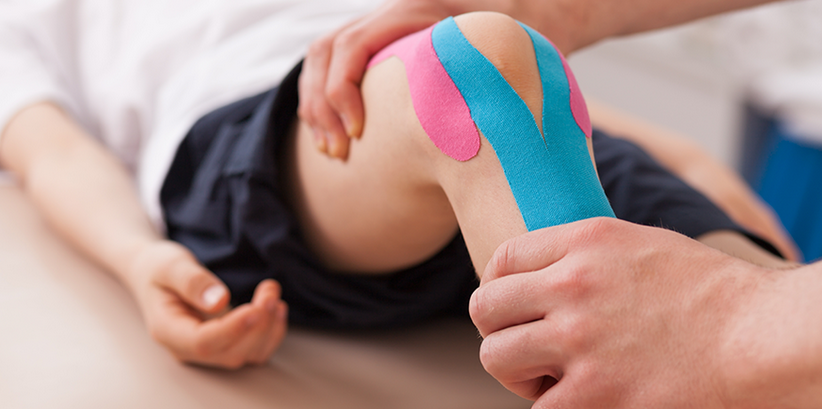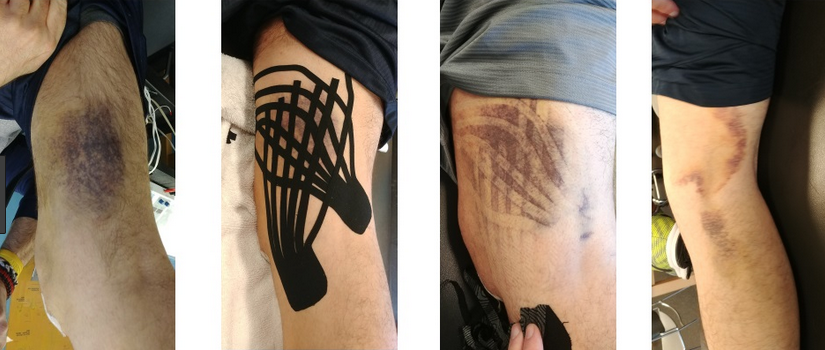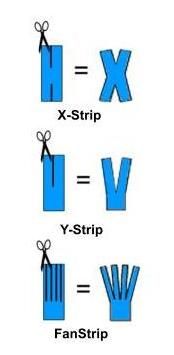1. What is Kinesiology tape?
 Kinesiology tape was developed in the 1970’s by a chiropractor named Dr. Kenzo Kase. Dr. Kase was born in Japan in the early 1940’s and later graduated from National University of Health Sciences in Chicago, Illinois. While treating his patients, he became frustrated with traditional taping methods secondary to limited joint motion because of the tape’s rigidity and skin irritation. Thus, Kinesio Tape was born. “Eventually they had a tape that was flexible enough to preserve range of motion, but lightweight and hypo-allergenic to stay on the skin without causing a rash. The new tape imitated the thickness and resilience of human skin.”
Kinesiology tape was developed in the 1970’s by a chiropractor named Dr. Kenzo Kase. Dr. Kase was born in Japan in the early 1940’s and later graduated from National University of Health Sciences in Chicago, Illinois. While treating his patients, he became frustrated with traditional taping methods secondary to limited joint motion because of the tape’s rigidity and skin irritation. Thus, Kinesio Tape was born. “Eventually they had a tape that was flexible enough to preserve range of motion, but lightweight and hypo-allergenic to stay on the skin without causing a rash. The new tape imitated the thickness and resilience of human skin.”
2. What is it for?
Kinesiology tape is thought to reduce pain, improve joint motion and awareness in space, reduce swelling and bruising, and relax or stimulate muscles.
3. How does it work?
The truth is that no one knows for sure how the tape works, but there are three main theories.
A) Tape manufacturers suggest the tape “facilitates lymphatic drainage by microscopically lifting the skin.” “Accumulation of lymphatic fluids may cause increased pressure on muscles and tissue which can cause significant discomfort or pain.” The lifting of the of the skin is thought to improve the transportation of white blood cells and get rid of cellular waste. If you have had kinesiology tape, you may have noticed wrinkling of the skin. This wrinkling can increase activity in the protein filaments (the stuff that connects us together) to become more active and “suck up” swelling. 
B) Just as a band-aid on a cut or rubbing a sore muscle reduces pain, kinesiology tape is thought to work on the same principles. The tape is thought to play a trick on the nervous system to distract our brains from feeling pain. Our brains receive the information of touch prior to that of pain. This added feedback to sensory receptors in muscles can help control muscle activation/ movement.
C) The other common theory is just the placebo effect.
4. What does the research say?
The research on Kinesiology tape is limited and with inconsistent results. There are no studies which support long-term pain relief. In the few studies which kinesiology tape was found effective include: strength/ proprioception, range of motion, and swelling. Although the research isn’t strong supporting tape use, it doesn’t dismiss the positive experiences people have. As with any treatment, what works on one person may not on the other!
5. How long does it stay on?
How long the tape stays on just depends on the brand of tape and your skin type. As long as the skin is free of hair and clean, the tape should stay on for around three days. The edges of the tape will start to peel so you can trim the edges or just take the tape off. The tape has tiny pores which allow sweat and water to escape so you can shower with the tape on. In general, kinesiology tape is pretty gentle on the skin, but make sure to do a skin test if you have sensitive skin. Just remove the tape if irritation or pain occurs.
6. How do you apply it?
There are thousands of ways to apply tape, so it is important to have a therapist evaluate your pain to deter mine the best method for application. Because kinesiology tape is not a long-term solution for pain control, other interventions are recommended. There are four main shapes of tape “I, Y, X, and fan.” The corners of the tape are rounded to prevent rolling. The tension of the tape matters, but generally speaking less tension is better. To reduce skin irritation the beginning and end of the tape are applied with no tension on the skin. Finally, the direction of pull also matters. To relax the muscle, the tape is applied from muscle insertion to its origin. To strength muscle, apply from the muscle origin to insertion. For swelling and bruising a fan strip is applied. Visit https://www.kttape.com/how-to-apply-kt-tape for specific tape instruction.
mine the best method for application. Because kinesiology tape is not a long-term solution for pain control, other interventions are recommended. There are four main shapes of tape “I, Y, X, and fan.” The corners of the tape are rounded to prevent rolling. The tension of the tape matters, but generally speaking less tension is better. To reduce skin irritation the beginning and end of the tape are applied with no tension on the skin. Finally, the direction of pull also matters. To relax the muscle, the tape is applied from muscle insertion to its origin. To strength muscle, apply from the muscle origin to insertion. For swelling and bruising a fan strip is applied. Visit https://www.kttape.com/how-to-apply-kt-tape for specific tape instruction.